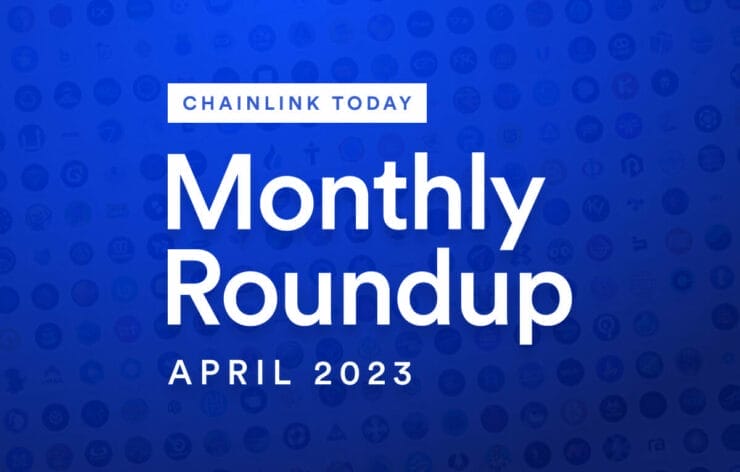April was packed with exciting events for the global Chainlink community. At the inaugural Hong Kong Web3 Festival, Chainlink Labs Chief Ecosystem Growth Officer Adelyn Zhou delivered a compelling keynote illustrating how Chainlink’s web3 services platform is taking the tokenized asset space – projected to surpass $16 trillion by 2030 – to new heights by enabling virtually any real-world commodity to be represented on-chain.
“We are at a transformational time,” she said. “We are at the cusp of innovation. There is so much happening here.”
In the wake of a petition to temporarily pause AI development signed by more than 2,600 tech industry leaders including Tesla CEO Elon Musk and Apple co-founder Steve Wozniak, Chainlink co-founder Sergey Nazarov advocated for building an AI-resistant society with blockchain technology and decentralized infrastructure such as oracle networks.
“The question is not whether we should slow down the development of AI, that ship has likely sailed,” he wrote. “The key question now is how key parts of our society can become AI resistant.”
During an in-depth interview with Nathaniel Whittemore on The Breakdown podcast, Nazarov elaborated on how AI’s rapid evolution could accelerate society’s shift toward deterministic blockchain-based systems and explained how decentralized infrastructure could defend against adversarial AI by means of consensus.
“The reason why consensus has better security properties is because instead of having one entity to compromise, you have tens or hundreds or thousands of entities,” he explained. “If AI becomes a form of unpredictability, then it’s possible that our industry becomes the solution to that problem.”
During Consensus 2023 in Austin, Texas, Nazarov highlighted how Chainlink’s web3 infrastructure can also power DeFi as a “conflict of interest-free” alternative to traditional finance. He argued that ongoing crises of faith in traditional finance will drive increased adoption of decentralized infrastructure such as Chainlink’s Proof of Reserve, which could help prevent catastrophes like last year’s FTX collapse.
“This architecture will be the future of the entire global financial system,” Nazarov said.
Late last year, Chainlink introduced low-latency oracles as a new financial primitive designed to secure DeFi-based alternatives within the quadrillion-dollar global derivatives market. In April, decentralized perpetual exchange GMX announced it will integrate Chainlink’s low-latency oracle solution to support perpetuals, swaps, and liquidity in the upcoming GMX V2 protocol.
Johann Eid, VP of Go-To-Market at Chainlink Labs, described the economic alignment between Chainlink and GMX as an important step toward creating essential web3 infrastructure that enables a more sustainable DeFi ecosystem.
“With this collaboration, we mark a new milestone for the space and its race towards mass adoption,” he said.
Rounding out April news, EVM-compatible blockchain ecosystem Celo announced it has joined Chainlink SCALE in order to support its mobile-first, regenerative finance (ReFi)-focused ecosystem’s long-term sustainability.
“Developers building on Celo now have access to Chainlink’s oracle services, enabling the next generation of highly scalable Web3 mobile applications,” said Celo Foundation’s Head of Ecosystem Growth, Xochitl Cazador.
Head of Blockchain Partnerships at Chainlink Labs, Niki Ariyasinghe, indicated that Chainlink oracles on Celo’s carbon-negative, permissionless layer-1 protocol could ultimately unlock opportunities that accelerate the world’s shift toward web3.
“By reducing the operating costs of oracle nodes, Celo will be able to empower its developers to build more sophisticated mobile applications that help drive global Web3 adoption,” he said.
View the entire Chainlink ecosystem in one place.



